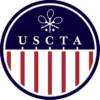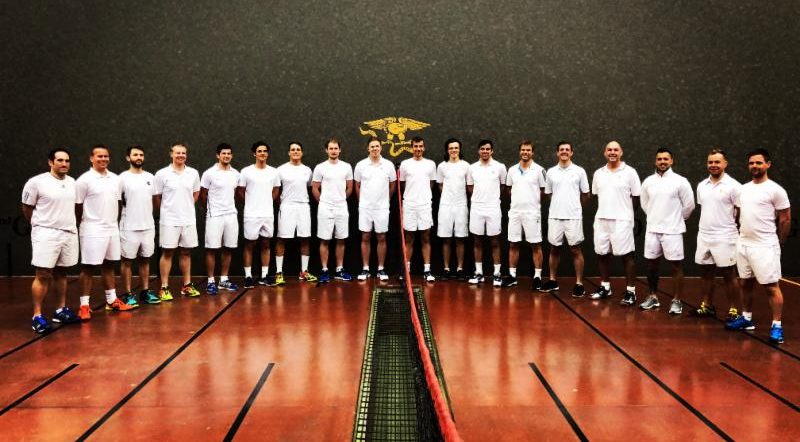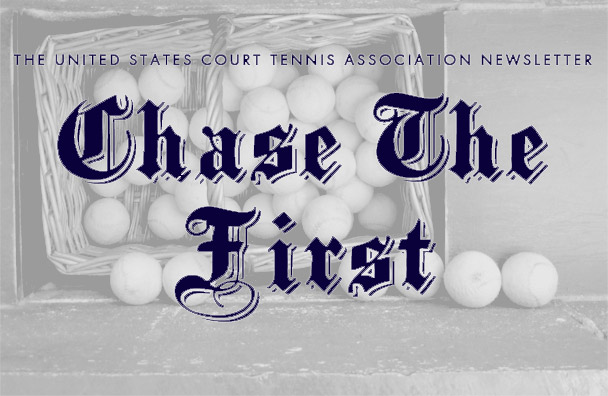WITH ACHING livers, steak and snag-filled bellies and mostly unbruised egos, twenty-two Americans have been slowly limping home from the greatest by-annual fortnight of tennis on the planet, the Boomerang.
There is nothing quite like it. Every other January the Royal Melbourne Tennis Club hosts a gargantuan party. There are two tournaments run concurrently: the Boomerang, a team competition, and the RMTC Handicap Doubles. Both are doubles. Both involve round-robin play with the top teams going through to a knockout draw. Both are handicapped, with the abilities ranging from Julian Snow and his 6+ to Jean Ferris and her 63. This year one hundred and ninety men and women entered the fray. Half that number came from the United Kingdom or States.
LATE ON a Saturday night, five Americans were wandering the streets of a town on an island off the coast of Australia. In the moonlight we spotted a medieval hall. It was made of rough sandstone, with only a few windows and a vine snaking up the side. A church steeple rose up next to it. Was this France in 1740? We burst inside and found fifty people sitting in candlelight along one long table. This was Hobart, Tasmania during the middle weekend of the Boomerang and the Manchester team was in full cry.
I sidled up to Richard Christmas, the senior Manchunian statesmen and was told the origins of the Boomerang. “I came over with a couple friends in 1990 for the Christmas holidays,” he said in his distinctive patois. “It was incredible fun. We came out here to Hobart for a weekend, ran around. Lovely. We came back the following year. After a couple of years Melbourne was getting tired of putting up with us alone and decided to invite other clubs to come and play. So the first Boomerang was held in 1994. The 1995 one was so much bigger and so viciously”-Christmas emphasized the word with a sneer-“exhausting that they decided to hold it every other year.”
The 2003 version, then, was the sixth official running of the Boomerang. There were thirty-two teams (each with five or six members), ranging from the Manchester Galahs to the Newmarket Nasties to the RMTC Growlers. (Each team plays four sets, first to nine games, in each of its four round-robin matches, with handicap.) Four U.S. clubs were officially represented: the New York Jesters, Newport Nicks, Washington Supreme Courts and Aiken International, with the rest of Americans dotted amongst four other teams. (Aiken was made up of one Aiken resident, David King, and four non-resident members.)
It was far and away the highest number of Americans appearing down under, and we were rewarded with some unprecedented results. Washington failed to win a match in four tries and Aiken likewise suffered badly. New York, boasting both USCTA vice-presidents, split its matches 2-2. Its final match was riven with excitement. Twice in a row Howard McMorris played a 8-all, 40-all, no-ad point and won. The second time he and partner Sam Abernethy saved nine match points. On the last point of the match, playing off a chase of second gallery, McMorris brilliantly dug out a low, skimming ball in the corner and rifled it into the winning gallery.
The heroics were not enough. Sixteen teams went through to the next round and the seventeenth team in ranking was New York. However, America’s pride was sustained by Newport, who managed to beat New York and slip into the next round, the first time an all-American team has done that at the Boomerang. Although they lost in their next match, it was a fine result.
American ringers did even better. Peter Vogt from Philadelphia, with a stunning record of wins, managed to pull the Petworth Panters into the semifinals. His townsman Dick Tanfield did even better and helped put the Hampton Court Tudors into the finals. Although the Tudors went down 4-0 to the RMTC Eagles, Tanfield, with his preternatural calm, was a fighting force and produced the closest and most interesting match of the day.
In the Handicap Doubles, an individual doubles tournament, America had only one bright spot. In the highly competitive B division, Terry Eagle, with his British partner Lorne Williamson from Cambridge, won the division. It was one of the stories of the fortnight. Eagle grew up in New York and Tuxedo and has lived in southern California for the past twenty years. Apart from a couple brief forays onto courts in England, he hadn’t played court tennis in thirty-five years.
BESIDES THE endless tennis at Royal Melbourne, there was some heavy and often hilarious off-court action. Most players were billeted with local players and the billets often had team barbies laid on at their homes, with the usual steak and swag (sausage) food and the ever-present, ever-copious supplies of Australian wine. Many partook of the Australian Open, whose first week coincided with the Boomerang’s second week. Alan Willingham, the RMTC’s archivist, led fabulously informative architectural history tours of Melbourne. Everyone golfed and some glimpsed cricket. There was a cocktail party in the old racquets court at the Melbourne Club and dinners at South Yarra and Kooyong, the two great grass-court lawn tennis clubs in the city. The final dinner lasted until well after midnight. There were many ribald jokes, presentations and toasts, and it concluded with a rare appearance by the “Suns of Suction,” a two-man band, accordion and a B-flat tuba, that led the crowd in the singing of the Boomerang Cup Hymn, to the tune of “Funiculli Funiculla.”
With Richard Christmas setting the example, most players also visited the other four tennis clubs in Australia. Sydney is the booming club in Australia. Wayne Davies ducked out of the club a year ago, a new pro, Rob Bartlett, has moved in and membership has quadrupled to over one hundred active players. The club, based at a university on the outskirts of Sydney, has a glass wall above the dedans.
Romsey has even more glass walls. Built in 1999 by Gordon Cope-Williams at his country estate about an hour outside Melbourne, Romsey has glass above both the dedans and the receiving side penthouse, as well as a clerestory and a glass wall below the penthouse on the receiving side: upwards of five hundred people could comfortable watch a match. The airy, light court is undeniably quirky, with a wooden tambour, the ball basket in the middle of the trough and five further feet of length, but it does boast a cricket pitch and a working vineyard within steps of its unusual grille.
Ballarat is another country court. About an hour and a half outside Melbourne, it is situated besides a little stream just outside a famous gold-mining town. Built in 1984, Ballarat has distinctive red walls and a wonderfully cozy atmosphere.
The granddaddy of tennis, though, is Hobart. The first tennis court (lawn or real) in the southern hemisphere, the Hobart court was built in 1875. For its centenary Pierre Etchebaster came out. He planted a vine at the club which has flourished along the old walls and was lovingly spared in the club’s 2001 renovations. Hobart, with its blue walls, tiny grille and lack of bounce, is a classic nineteenth-century court. But it is thoroughly modern. It is often filled with kids from the local university, which is a main reason why Hobart has such a strong junior program.
Melbourne, though, is the most active club. Built in 1974 (when the club moved out from its downtown facility where it had played tennis since 1882), the club has two fine courts, a rather complete tennis library and five professionals, including former Boston and Newport pro Barry Toates and current world champion Rob Fahey.
Australia changed its terminology from “royal” to “real” tennis last year, bringing it in line with England. Perhaps the U.S. might consider our attachment to the word “court”? Either way, by pulling off the largest, longest and most bibulous tennis tournament in the world, Australia has gone a long way in uniting the international tennis community under one banner.


